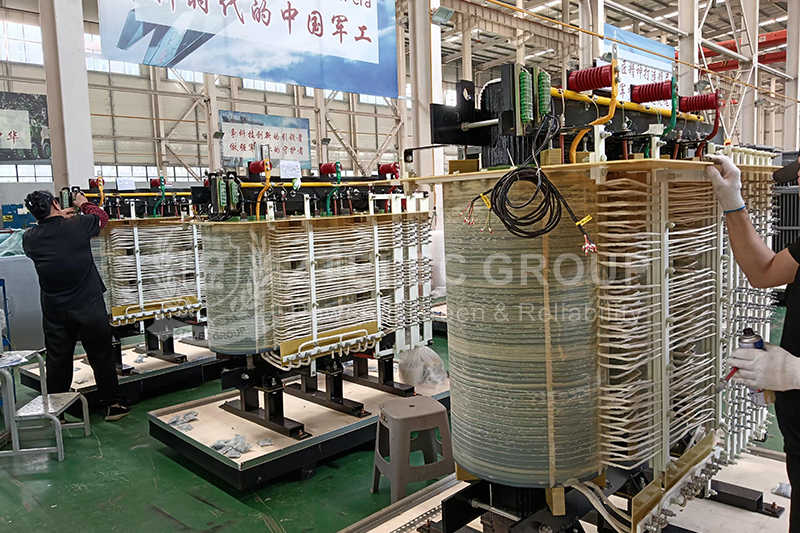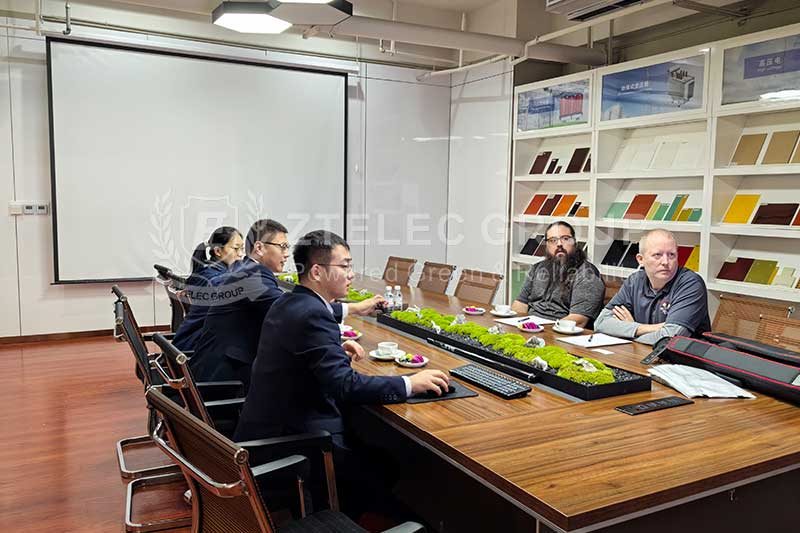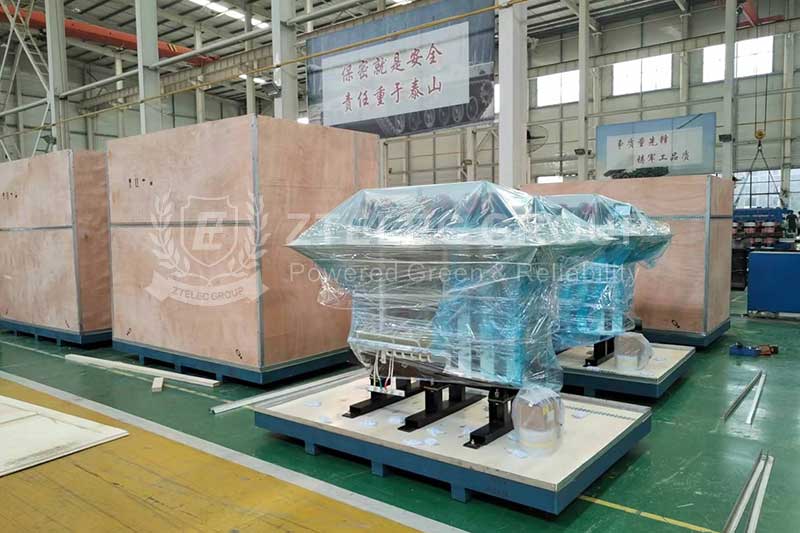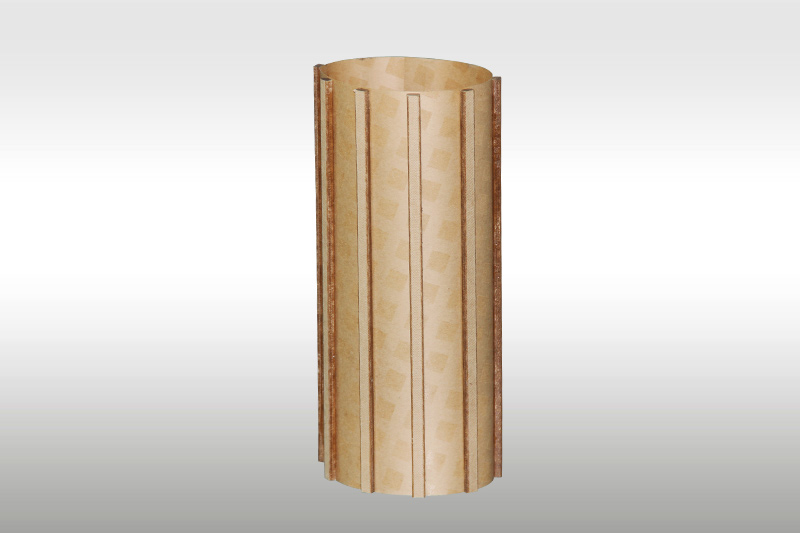5kV Rectifier Transformers in High-Power DC Systems: Industrial Applications
As global energy consumption continues to rise, the need for high-efficiency, long-distance power transmission becomes increasingly critical. Ultra-High Voltage Direct Current (UHVDC) systems have emerged as an advanced solution to meet the demands of modern energy networks. At the core of these systems lie 35kV rectifier transformers, which are essential for voltage conversion, energy conditioning, and ensuring system stability. This article provides an in-depth exploration of 35kV rectifier transformers, highlighting their structure, function, and key industrial applications in high-power DC systems.
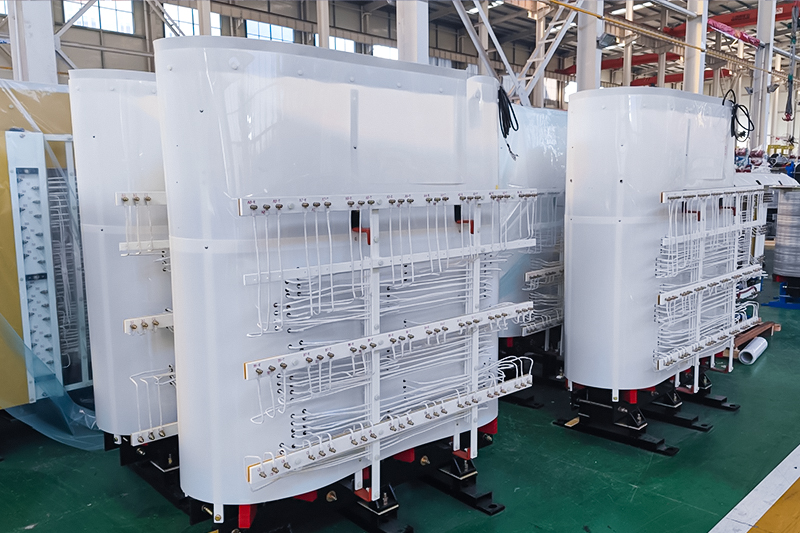
What is a 35kV Rectifier Transformer?
A 35kV rectifier transformer is a special-purpose power transformer designed to operate at an ultra-high voltage level of 1035 kilovolts. It serves a dual role in high-power direct current (DC) systems: it transforms voltage levels suitable for rectification and isolates the AC power source from the rectifier units. These transformers are engineered to handle high levels of electrical stress, minimize losses, and support the efficient operation of rectifier bridges used in high-voltage DC transmission.
Structurally, 35kV rectifier transformers often adopt a three-phase, oil-immersed, and tap-changing design, featuring advanced insulation systems such as oil-paper insulation and interleaved winding configurations to withstand overvoltages and harmonics. High-quality silicon steel, amorphous core materials, and multi-stage electromagnetic shielding are employed to enhance energy efficiency and reduce losses.
Why 35kV? The Significance of Ultra-High Voltage
Transformers rated at 35kV are typically deployed in ultra-high voltage (UHV) AC/DC transmission systems. This voltage level is critical for enabling long-distance bulk power transmission with minimal energy loss. In China, for example, several UHVDC projects—such as the ±1100kV Changji–Guquan line—leverage these transformers to transmit electricity over distances exceeding 3,000 kilometers. The higher the voltage level, the lower the line current, and therefore the lower the I²R transmission losses and conductor size requirements.
Key Functions of 35kV Rectifier Transformers
In high-power DC systems, the 35kV rectifier transformer performs several critical roles:
1. Voltage Transformation: Converts the high-voltage AC supply to a voltage suitable for rectification. This step is crucial for stable and safe DC conversion.
2. Electrical Isolation: Ensures galvanic separation between the AC grid and the DC rectifier, protecting equipment and personnel.
3. Harmonic Suppression: Helps reduce harmonics and reactive power issues introduced by the rectification process through specialized winding configurations and magnetic circuit design.
4. Tap Regulation: Supports on-load tap changers (OLTC) or fixed taps to maintain voltage stability under varying load conditions.
Applications in High-Power DC Systems
35kV rectifier transformers find their primary application in large-scale industrial and grid-level UHVDC projects. Below are some key application domains:
1. National Grid Interconnection
In vast countries like China, India, and Brazil, UHVDC systems are deployed to interconnect hydroelectric power stations in remote western regions with major consumption centers in the east or south. 35kV rectifier transformers facilitate reliable long-distance power flow, drastically reducing transmission losses and enabling grid balancing across regions.
2. Renewable Energy Integration
Massive wind and solar farms are often located in remote areas where AC transmission is inefficient. UHVDC networks supported by 35kV transformers allow the bulk delivery of clean energy to urban load centers, accelerating decarbonization. These transformers are designed to accommodate variable input voltages and grid fluctuations typical of renewables.
3. Metallurgical and Chemical Industries
Industries such as aluminum smelting, electrolysis, and high-temperature furnaces require steady, high-power DC supply. 35kV rectifier transformers ensure uninterrupted operation and withstand harsh conditions, including thermal cycling and heavy load fluctuations. Their robust mechanical and dielectric strength ensures reliability in demanding environments.
4. Intercontinental Power Exchange
Future applications include international power exchange projects—such as connecting grids between continents or across oceans. With the ability to step up or step down UHV voltages, 35kV rectifier transformers are ideal for ensuring stable energy flow over extremely long distances, opening the door to global energy trading networks.
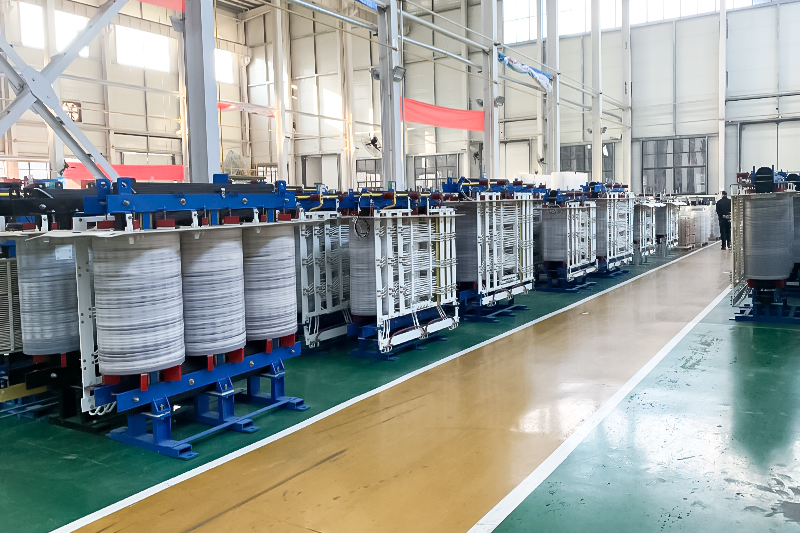
Technical Highlights and Design Considerations
The design of a 35kV rectifier transformer involves advanced technical engineering:
High Insulation Coordination: Use of capacitive grading, layered oil ducts, and active-part reinforcement ensures uniform voltage distribution and protection against lightning surges and switching overvoltages.
Thermal Management: Oil circulation and radiators maintain temperature within safe limits, even under sustained overloads.
Low Partial Discharge: Carefully engineered insulation materials and geometric design help minimize PD levels, ensuring long service life and high reliability.
Monitoring and Protection: Integrated sensors for temperature, moisture, gas detection, and winding displacement support real-time monitoring and predictive maintenance.
Challenges and Future Outlook
While 35kV rectifier transformers offer unmatched performance in high-power DC systems, their design, manufacturing, and installation present unique challenges. These include the need for large-scale test facilities, strict quality control, transportation logistics, and long commissioning times. However, with the rapid growth of UHVDC applications and demand for clean, reliable power, investments in such high-voltage equipment are accelerating globally.
Future development will likely focus on digital twin technology, smart diagnostics, and even higher voltage ratings beyond 1100kV. As the energy transition continues, 35kV rectifier transformers will remain a cornerstone of high-efficiency power transmission infrastructure.
35kV rectifier transformers represent a pinnacle of electrical engineering, enabling the efficient and stable operation of high-power direct current systems. Their role in UHVDC projects, renewable energy integration, and industrial DC applications makes them critical assets for the modern power landscape. As power demands increase and sustainability becomes a global priority, these transformers will continue to play a vital role in shaping the future of energy infrastructure.
- more+releated article
- 2025-10-21Application of K Factor Transformer
- 2025-10-21Detailed explanation about transformer model w
- 2025-10-2010kV Oil-Immersed Transformer Safety: Lightnin
- 2025-10-20What are The Advantages of Phenolic Cotton Clo
- 2025-10-17Are Three-Phase Isolation Dry-Type Transformer
- 2025-10-17G10 Epoxy Sheet: Choosing the Right Specificat
- 2025-10-1610kV Oil-Immersed Transformer Operation Inspec
- 2025-10-163240-B Epoxy Phenolic Glass Fiber Cloth Lamina
- 2025-10-15G10 Epoxy Sheet: The Preferred Insulation Mate
- 2025-10-15Analysis of Energy-Saving and Noise Control Te

